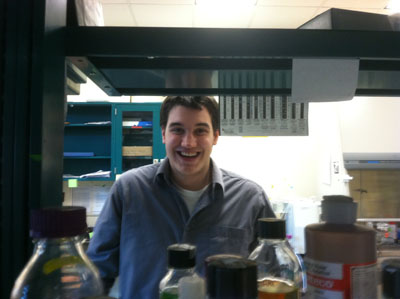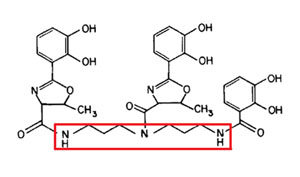Karatan Lab
Tony Angotti
Appalachian State University
Department of Biology
Rankin Science North
319 (Office), 303 (Lab)
828-262-6742

The pathogenic bacterium Vibrio cholerae infects 3-5 million people each year with the acute intestinal disorder cholera. The ability of V. cholerae to survive in a mammalian host is thought to depend partially on its ability to form a biofilm. Biofilms are multi-cellular communities that form when cells adhere to surfaces and subsequently bind to each other. Organisms in a biofilm have higher resistance to antibiotics, nutrient deficiencies, and other harsh environmental conditions. Biofilm formation is regulated by a number of environmental signals, including the polyamine norspermidine. Norspermidine has been shown to positively regulate biofilms and is synthesized by the nspC gene. The goals of my research are to study the regulation of nspC and biofilm formation in V. cholerae.
One potential regulatory agent of nspC is iron. Like most organisms V. cholerae requires iron to survive and has many different iron acquisition systems. One such system involves the use of the catecholamide siderophore vibriobactin. Siderophores are iron chelating molecules that capture ferric iron (Fe(III)+) and bring it back to the cell. Vibriobactin (Fig 1) is composed of a norspermidine (Fig 2) backbone bound to dihydroxybenzoyl residues and oxazoline rings. Since vibriobactin contains a norspermidine backbone it is highly likely that there is a link between iron availability, vibriobactin synthesis, norspermidine production by nspC, and biofilm formation in V. cholerae. I am currently investigating the expression of nspC in response to varying levels of extracellular iron and polyamines. In addition to gene expression I am studying biofilm formation of vibriobactin utilization and synthesis mutants using in vitro assays and confocal microscopy.
Figure 1: Vibriobactin with norspermidine backbone indicated by the red box.
Figure 2: Norspermidine

